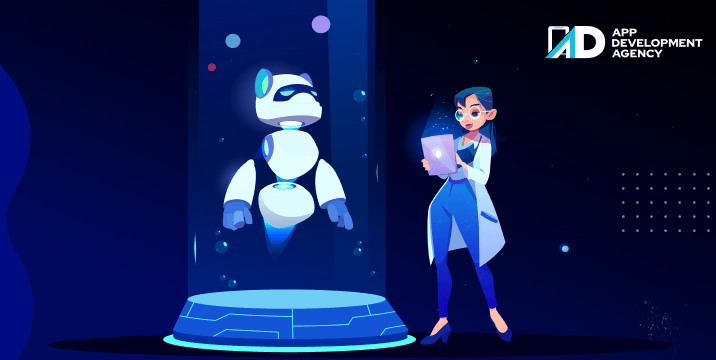Crux: Ever wondered how an insurance company knows you’re likely to cancel your policy before you even know?
Meet Rahul. He never missed a premium. He drove carefully. But one day, he got a slightly higher quote during renewal and quietly started looking elsewhere.
Now, imagine if his insurer had picked up on the early signs: fewer app logins, delayed responses, lower engagement. With predictive analytics, they could. A small alert could’ve nudged a rep to call him, offer a custom loyalty benefit, and keep him onboard.
So, what is predictive analytics here? It wasn’t magic or a disciplined way to read the patterns behind human behaviour, like noticing storm clouds before the rain?
It’s not about spying but about preparing within time.
What if, instead of reacting to fraud or churn or rising health risks, insurers could act before the damage is done? Wouldn’t that be fairer for everyone, both the company and the customer?
That’s how predictive analytics transforms insurance:
If data can speak, are we listening well enough?
In another instance, your car insurance provider sees that you’ve been braking hard, speeding up fast, and driving late at night. They might not say anything, but the data quietly adjusts your risk profile and your premium follows suit.
Any prediction cannot be useful without data. Predictive insurance enables informed decisions, protecting the insurer’s future. Insurers begin by collecting all kinds of data: Claims history, customer details, behaviour patterns, even weather and economic indicators. They use machine learning and statistical models to train the system to recognise patterns. The system learns which signs point to risks or rewards. Where does this knowledge go?
That’s why predictive analytics gets applied across the entire insurance cycle: (1) How risky is this customer? (2) What should we charge? (3) Is this claim genuine? (4) Should we send a discount or a warning? (5) All of these decisions get sharper, faster, and more accurate.
What happens when a storm brews not just outside, but in your life?
Neha, a single mother in Houston, didn’t have time to check the weather forecast that week. She was busy juggling her remote job, school runs, and carpool duties.
But her insurance chatbot, Ava, had been watching, not her, but the signals.
Storm warnings. Increased risk zone alerts. Her zip code blinked red.
Ava pinged her, politely but firmly: “Hi Neha, there’s a strong storm system approaching your area by Thursday. Would you like to review your flood coverage? I can help you update it in under 2 minutes.”
Was that creepy or caring?
Neha paused.
“Wait… is my current plan enough?”
Ava responded instantly,
“Based on recent claims in your area and changes in weather patterns, we suggest increasing your temporary housing cover. 89% of similar profiles in your area opted for this after recent flooding.”
Neha adjusted her plan. One tap. No call centre, no forms.
Then the storm hit.
A tree fell on her roof. Panic? Sure. But Ava was ready.
“I’ve filed a preliminary claim. I’ve also booked an inspection slot for Saturday. Would you like me to help find a certified contractor in your area?”
Neha didn’t have to chase anyone.
She didn’t feel abandoned.
And she didn’t have to explain herself over and over again.
Ava already knew.
From past claims, her profile, and even her tone of urgency, it predicted what she’d need next.
The Real Lesson?
Was Ava just a chatbot? Or was it predictive analytics in disguise?
Was it simply reacting or was it understanding Neha’s world, one datapoint at a time?
Because that’s what modern insurance is becoming: Not just a shield when life breaks, but a guide before it bends.
End Result:
Predictive analytics in insurance enables insurers to make more informed decisions about pricing, underwriting, and claims management, ultimately leading to increased efficiency, reduced costs, and improved customer satisfaction.
Predictive models can analyze claim data to identify potentially fraudulent or high-risk claims early on. This allows insurers to prioritize investigations and streamline the processing of legitimate claims, reducing delays and costs. Zopper notes that predictive models powered by Big Data enable quicker and more accurate assessments of claim severity and validity, streamlining decision-making and prioritising high-risk and potentially fraudulent cases.
By understanding customer behavior and preferences, insurers can offer personalized products and services, proactive risk management advice, and faster, more efficient claims processing. This leads to greater customer satisfaction and loyalty.
First, insurers scoop up information from all corners—telematics, social media, transaction history—like bees collecting nectar, frantically but purposefully. Then comes the clean-up, because raw data is often as messy as a toddler’s art project—streaks, smudges, and all. Integration smooths those edges, aligning the chaos into coherent insight. Now enter the scientists, the model makers—who sculpt algorithms like potters shaping clay, searching for hidden patterns in the muck. The result? A whisper from the system: “This customer, right here, might file a claim in three months.” It’s part science, part intuition, all gears turning in a machine designed to act, not just react. Automated decisions in underwriting, pricing, and even customer care flow from these predictions.
I once spoke to a predictive analyst who said, “It’s like being a detective—except you already have the ending, and now you just work backwards.”
The success in analytics requires clear goals, sharp execution, and aligned incentives. These companies nailed that trifecta:
Are we still relying on dusty spreadsheets to predict risk, or have we finally crossed into a smarter future? Today, predictive analytics in insurance isn’t just about number crunching; it’s about knowing in real time. With AI and machine learning working in tandem, models aren’t just more accurate, they’re practically intuitive. And with cloud-based infrastructure, insurers can now process data at speeds that make old systems look like dial-up. But where’s all this data coming from? Your smartwatch, your car, even your smart fridge, IoT, and wearables are feeding these models second by second.
Still, if a model makes a decision, shouldn’t humans understand why? That’s where explainable AI steps in making black-box models readable for both regulators and customers. And let’s not forget claims: with natural language processing, even handwritten complaint notes or messy support emails are becoming structured insights.
If insurance is the safety net of society, predictive analytics is the upgraded stitching that keeps it strong. It’s about showing up faster after a storm, offering fairer prices to cautious drivers, and saying “we see you” to the loyal customers who’ve never filed a claim.
Are there hurdles? Sure. But every industry that embraced predictive analytics is better off for it. Insurance is no different. And the companies with the help from experienced predictive analytics development companies, will be tomorrow’s industry leaders.
Q1: What kind of data is needed for predictive analytics in insurance?
A mix of demographics, claims history, sensor data, social media (yes, even that), lifestyle indicators, etc.
Q2: Can predictive analytics help small insurance firms?
Smaller players often benefit more because it helps them punch above their weight.
Q3: How is predictive analytics different from traditional actuarial work?
Actuarial models use static assumptions; predictive analytics evolves with each new data point.
Q4: Are there privacy risks?
There can be. That’s why ethical use, regulatory compliance, and customer transparency matter.
Q5: How long does it take to see ROI?
Depends on the use case, but many firms report early wins within 6–12 months.

I still remember standing in a crowded supermarket in 2015, staring blankly at three different brands of cereal, unsure which one was cheaper, healthier, or even remotely worth the price tag. Now my shopping app nudges me with suggestions based on my past choices, points out discounts I’d probably miss, and even reminds me that …
Continue reading “Benefits of Artificial intelligence in Retail”
Read More
I was so inclined to write a theory acknowledging the applications and benefits of AI, not just in retail but across various domains, but I know that is what we know, and what we are feeling day to day. AI can work tirelessly 24*7, without a pause, but humans need a break. And to make …
Continue reading “How Artificial Intelligence is Transforming the Retail Industry”
Read More
We live in an era where your coffee machine can sync with your smartwatch, the air conditioner can sync with your smartphone, but your university portal still logs you out after three minutes of inactivity. Why is that? While the corporate world, healthcare, and even agriculture have embraced the cloud like it’s the second coming …
Continue reading “Cloud Computing in Education- Benefits, Challenges, and Implementation Process”
Read More